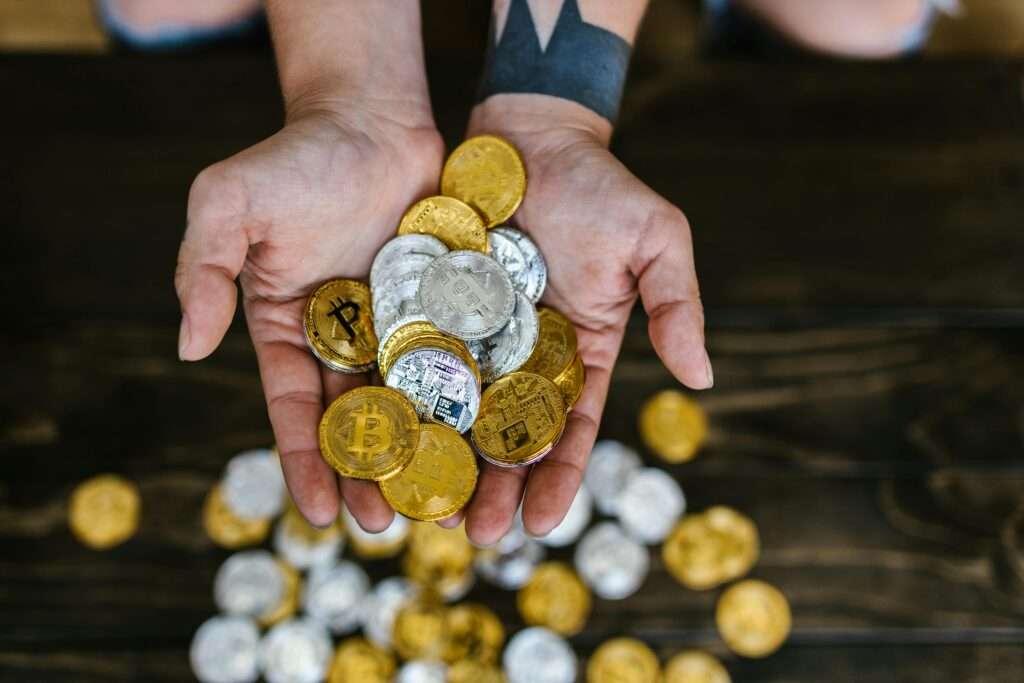
Introduction
Decentralized Finance, or DeFi, is revolutionizing the traditional financial system by offering a transparent, permissionless, and decentralized alternative. Built on blockchain technology, DeFi enables users to access financial services like lending, borrowing, and trading without intermediaries. This guide provides an in-depth look at how DeFi works, its advantages, and how to get started with popular platforms like Uniswap and Aave.
What is Decentralized Finance (DeFi)?
DeFi refers to a financial ecosystem built on blockchain technology that eliminates the need for central intermediaries like banks or brokerages. Instead, DeFi relies on smart contracts—self-executing agreements coded on a blockchain.
Core Features of DeFi:
- Decentralization: Operates on decentralized networks like Ethereum or Binance Smart Chain.
- Transparency: All transactions are recorded on public blockchains, ensuring accountability.
- Permissionless: Anyone with an internet connection and a crypto wallet can participate.
- Programmability: Smart contracts automate complex financial transactions.
Key Benefits of DeFi
1. Accessibility
DeFi platforms are open to anyone worldwide, removing barriers faced by individuals without access to traditional banking systems.
2. Lower Costs
By eliminating intermediaries, DeFi significantly reduces fees associated with financial transactions.
3. Financial Control
Users retain full ownership of their assets, unlike traditional systems where banks act as custodians.
4. Innovation
DeFi introduces new financial products, such as flash loans, yield farming, and liquidity pools, which were previously unavailable in traditional finance.
How DeFi Works
DeFi applications use smart contracts to facilitate transactions without intermediaries. These smart contracts are deployed on blockchain networks and execute automatically when specific conditions are met.
Key Components of DeFi:
- Decentralized Exchanges (DEXs): Platforms like Uniswap allow peer-to-peer crypto trading without intermediaries.
- Lending Protocols: Platforms like Aave enable users to lend or borrow assets directly.
- Stablecoins: Cryptocurrencies pegged to stable assets (e.g., USD) for price stability.
- Liquidity Pools: Users deposit funds into smart contracts to facilitate trading and earn rewards.
Popular DeFi Platforms
1. Uniswap
Uniswap is a leading decentralized exchange (DEX) allowing users to trade cryptocurrencies directly from their wallets.
- How It Works:
- Uses an Automated Market Maker (AMM) model.
- Traders swap tokens via liquidity pools funded by other users.
- Getting Started:
- Connect a wallet like MetaMask.
- Select tokens to trade.
- Approve the transaction.
2. Aave
Aave is a decentralized lending and borrowing protocol. Users can earn interest by supplying assets or borrow against their collateral.
- How It Works:
- Deposit crypto to earn interest or use as collateral to borrow other assets.
- Interest rates are algorithmically determined based on supply and demand.
- Key Features:
- Flash loans: Instant, uncollateralized loans repaid within one transaction.
- Variable and stable interest rate options.
How to Get Started with DeFi
1. Set Up a Crypto Wallet
- Download a wallet like MetaMask or Trust Wallet.
- Securely back up your wallet’s seed phrase.
2. Buy Cryptocurrency
Purchase crypto like Ethereum (ETH) from exchanges (e.g., Coinbase, Binance) to use as gas fees or for transactions.
3. Choose a DeFi Platform
Decide whether to trade on a DEX, lend assets, or participate in yield farming based on your goals.
4. Connect Your Wallet
Connect your crypto wallet to the DeFi platform. Ensure you’re using the correct website to avoid phishing scams.
5. Start Transacting
Follow the platform’s instructions to trade, lend, borrow, or provide liquidity.
Risks Associated with DeFi
1. Smart Contract Vulnerabilities
Bugs or exploits in smart contracts can lead to loss of funds.
2. Impermanent Loss
Liquidity providers may lose value due to price changes in their deposited tokens.
3. Market Volatility
Cryptocurrencies are highly volatile, impacting the value of DeFi transactions.
4. Scams and Rug Pulls
Fraudulent projects may disappear with users’ funds, emphasizing the need for due diligence.
Future of DeFi
The DeFi ecosystem is continuously evolving, with advancements like:
- Layer-2 Scaling Solutions: Reduce transaction fees and increase speed.
- Interoperability Protocols: Enable seamless asset transfers across blockchains.
- Institutional Adoption: Traditional financial institutions are exploring DeFi integrations.
Read More…
Conclusion
Decentralized Finance (DeFi) is transforming the financial landscape by offering inclusive, transparent, and innovative solutions. By leveraging platforms like Uniswap and Aave, users can trade, lend, or borrow assets without intermediaries. While DeFi offers immense opportunities, understanding its risks and best practices is crucial for a secure experience.
FAQs
- What is the difference between DeFi and traditional finance?
DeFi operates on decentralized blockchain networks, removing intermediaries, while traditional finance relies on centralized institutions like banks. - How do I start with DeFi?
Set up a crypto wallet, buy cryptocurrency, and connect your wallet to a DeFi platform like Uniswap or Aave. - Is DeFi safe?
While DeFi offers transparency, risks like smart contract bugs and market volatility require users to exercise caution. - Can I earn passive income with DeFi?
Yes, through activities like lending, staking, or providing liquidity to pools. - What is a liquidity pool in DeFi?
A liquidity pool is a collection of funds locked in a smart contract to facilitate decentralized trading and earn rewards. - AIPRM
